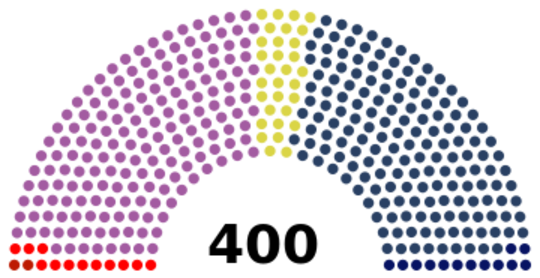Agarntrop
This article is incomplete because it is pending further input from participants, or it is a work-in-progress by one author. Please comment on this article's talk page to share your input, comments and questions. Note: To contribute to this article, you may need to seek help from the author(s) of this page. |
The Federation of Agarntrop | |
|---|---|
|
Flag | |
Motto: "Equality and freedom" | |
Anthem: Land of Freedom | |
| Capital | Agarntrop City |
| Largest | Puklaz-nite |
| Official languages | Agarn English |
| Ethnic groups | Agarn (90%), Others (10%) |
| Demonym(s) | Agarn |
| Government | Federal Democratic Parliamentary Republic |
| Peter Auklando (ADC) | |
| Shelly Balera (Liberal Party) | |
| Area | |
• | 95,751 km2 (36,970 sq mi) |
| Population | |
• 2017 estimate | 27,984,000 |
• Density | 310/km2 (802.9/sq mi) |
| GDP (PPP) | estimate |
• Total | $1,440,067,890,090 |
• Per capita | $48,027.88 |
| Gini (2001) | medium |
| HDI (2017) | very high |
| Currency | Slan (§) |
| Time zone | UTC-7 |
| Driving side | right |
| Internet TLD | .arn |
Agarntrop is a small nation in Western Kasia with a coastline to the west. The country was an Aziallian colony from 1643 to 1674, when it was granted independence due to the ongoing Slavers Wars. In return, it had to support the Lower Faction. It was still ruled by ethnically Aziallan settlers until 1787, when a revolt led to the foundation of the modern republic. It was transformed into a federation by an amendment to the constitution passed in September 2018.
Ethymology
The name 'Agarntrop' has its roots in the Old Agarn phrase 'Trrœrip ve Agæne' which translates to 'the fruitful land' due to the green and fertile nature of the Agarn landscape.
Demographics
Language
The most common language in Agarntrop is Agarn, which is closely linked to old Agarn and was - over time - adopted by the Agarn race (which makes up roughly 90% of the population) and is the standard Agarn language today.
The remaining 10% of Agarns speak a variety of languages as their mother tounge, as Agarn immigrants come from many countries around Anteria.
People
There is one predominant ethnic group in Agarntrop, the Agarn race (whom make up roughly 90% of the population). The remaining 10% come from a variety of countries.
History
First inhabitants
The Five Kingdoms
Medieval era
Aziallan Colonisation
Settler rule
Foundation of the republic
Industrialisation
Involvement in Canter Uprising
20th century
Darning Regime
Civil war
Recovery
Federation act
Government
The Senate
In Agarntrop, there is one national house of legislature, the Senate, which is elected via the Party List System with electors voting for a party rather than a candidate. Then the percentage of votes a party gets will be multiplied by four and the amount of seats the party gets in the Senate will be declared. Members in the Senate are automatically elected every five years with a term limit of 30 years, but the government or just the prime minister themselves may call an election before that time expires. The Senate is currently controlled by a coalition between the ADC and the liberals. This coalition is commonly referred to as the Centre-left coalition.
Executive Branch
The Agarn head of state and government is the Prime Minister, which is elected by the Senate along with the rest of the cabinet. The Prime Minister must form a government with either one party or a group of parties which together meet the required threshold of 201 seats. After this, the cabinet will be almost certainly elected as every party in the Agarn Senate requires their members to vote for their government. The Prime Minister has a term limit of 10 years.
The current Prime Minister is Peter Auklando of the ADC, who was re-elected in 2018 by a vote of 220-171 (with 9 either abstaining or not being present). His term will end at latest on the 10th December 2020, as he will have served for 10 years.
Judicial Branch
The Agarn supreme court consists of 12 seats. In order to ensure impartiality, 6 are appointed by the government and the other 6 are appointed by the official opposition (the largest party not in government). After an election, the supreme court appointments will re-occur, but there is no limit on the amount of times a justice can be reappointed unless the said justice dies or retires.
Culture
Art
Sport
Clothing
Miscellaneous
Trade
Tourism
International Relations
Festivities
| Date | Name | Working day |
|---|---|---|
| January 1st | New Year's Day | Yes |
| The first Sunday after the first Full Moon occurring on or after the vernal equinox. | Easter Sunday | No |
| June 17th | Constitution Day | No |
| October 30th | Liberation Day | Yes |
| December 24th | Christmas Eve | No |
| December 25th | Christmas Day | No |
| December 26th | Boxing Day | No |

